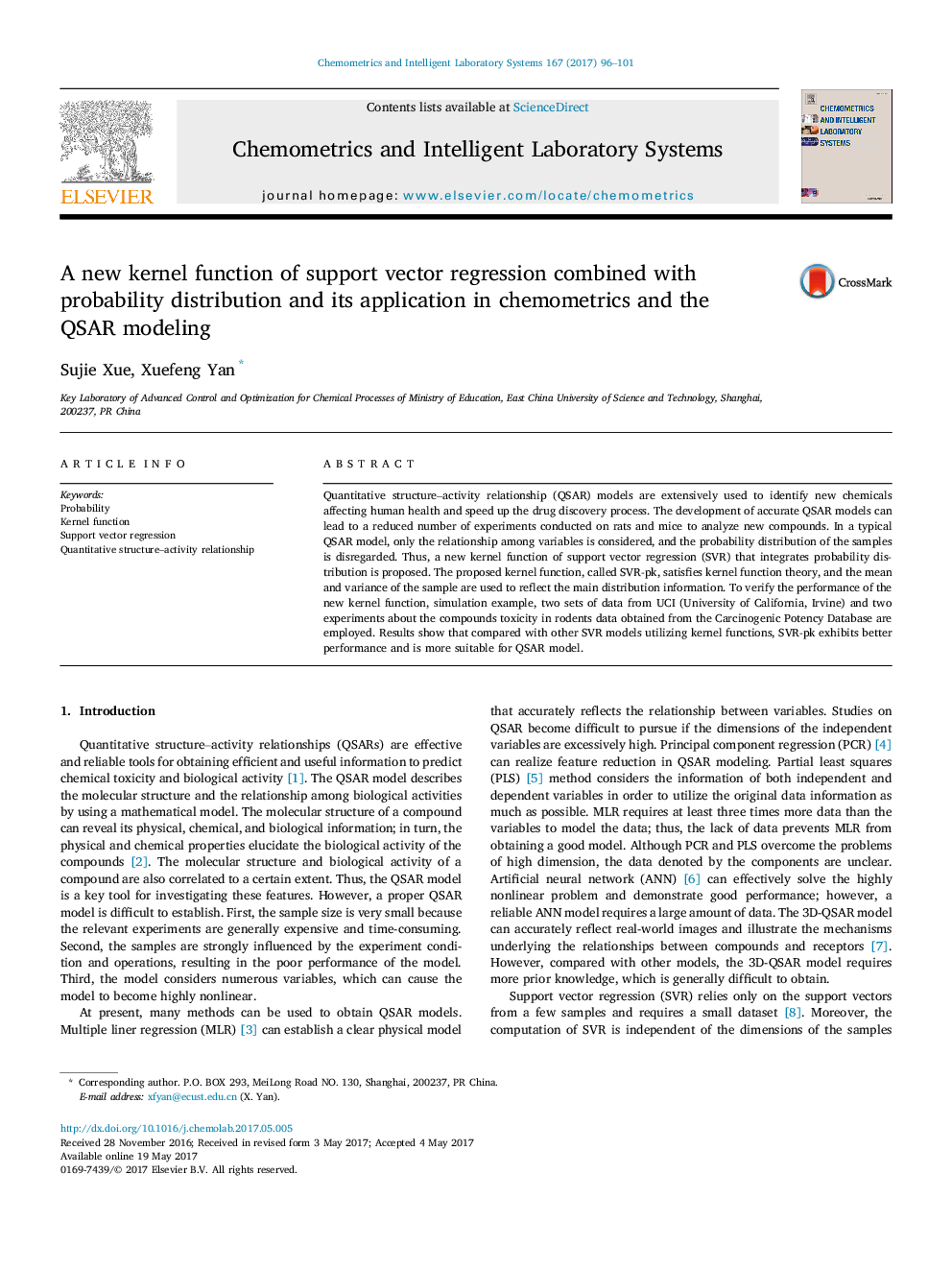| Article ID | Journal | Published Year | Pages | File Type |
|---|---|---|---|---|
| 5132176 | Chemometrics and Intelligent Laboratory Systems | 2017 | 6 Pages |
Abstract
Quantitative structure-activity relationship (QSAR) models are extensively used to identify new chemicals affecting human health and speed up the drug discovery process. The development of accurate QSAR models can lead to a reduced number of experiments conducted on rats and mice to analyze new compounds. In a typical QSAR model, only the relationship among variables is considered, and the probability distribution of the samples is disregarded. Thus, a new kernel function of support vector regression (SVR) that integrates probability distribution is proposed. The proposed kernel function, called SVR-pk, satisfies kernel function theory, and the mean and variance of the sample are used to reflect the main distribution information. To verify the performance of the new kernel function, simulation example, two sets of data from UCI (University of California, Irvine) and two experiments about the compounds toxicity in rodents data obtained from the Carcinogenic Potency Database are employed. Results show that compared with other SVR models utilizing kernel functions, SVR-pk exhibits better performance and is more suitable for QSAR model.
Keywords
Related Topics
Physical Sciences and Engineering
Chemistry
Analytical Chemistry
Authors
Sujie Xue, Xuefeng Yan,
